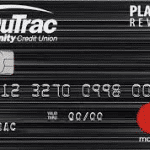Advertising
Utility bills are one of those monthly expenses that never seem to go away — and they often rise when you least expect it. From heating and cooling to lighting and appliances, energy costs can quietly eat away at your budget. But here’s the good news: you don’t have to make drastic changes or live uncomfortably to save money.
With just a few smart adjustments, you can start cutting down your energy use and reducing your bills every month. Many of the most effective energy-saving strategies are simple, low-cost (or free), and take just a few minutes to implement.
This article presents 11 practical energy-saving hacks that help lower your monthly utility bills without sacrificing comfort. Whether you’re a homeowner or renter, these tips will help you create a more efficient and affordable living space. You don’t need solar panels or a full home renovation — just a few thoughtful habits and tweaks that go a long way.
Let’s dive into some of the easiest and most effective ways to save energy and money while staying comfortable at home.

1. Use Smart Power Strips
Electronics and chargers use energy even when turned off. Smart power strips automatically cut power to devices that are in standby mode, helping reduce “phantom load” and saving you money without requiring daily effort.
2. Lower the Thermostat Slightly
Turning your thermostat down by just 1–2 degrees in winter or up in summer can reduce heating and cooling costs by up to 10%. Try layering clothing in the cold or using fans in the heat to stay comfortable without overworking your system.
3. Seal Drafts Around Windows and Doors
Small gaps around windows and doors let cold air in and warm air out (or vice versa). Use weather stripping or caulking to seal leaks and improve insulation. This can dramatically boost comfort and cut energy use.
4. Switch to LED Bulbs in Key Areas
LED bulbs use up to 75% less energy than incandescent ones and last much longer. Replace bulbs in rooms where lights stay on the longest — like the kitchen, bathroom, or living room — for the biggest impact.
5. Unplug Devices When Not in Use
Many electronics continue drawing power even when off. Unplug devices like toasters, coffee makers, and printers when not in use. For convenience, plug them into a power strip you can switch off easily.
6. Run Appliances at Off-Peak Hours
Electric companies often charge more during peak usage times. Run dishwashers, washing machines, and dryers in the early morning or late evening to take advantage of lower rates if your provider offers time-of-use billing.
7. Wash Clothes with Cold Water
Heating water accounts for a large portion of your energy bill. Washing laundry in cold water is just as effective for most loads and can reduce your machine’s energy use significantly.
8. Air-Dry Laundry Whenever Possible
Dryers consume a lot of energy. Try hang-drying clothes on a rack or clothesline when the weather allows. It’s gentler on fabrics, too, making your clothes last longer.
9. Set the Water Heater to 120°F
Most water heaters are set higher than necessary. Lowering the temperature to 120°F (49°C) reduces energy use without affecting comfort and prevents scalding risks — a win-win.
10. Use Curtains to Regulate Temperature
Close curtains during hot summer days to block sunlight and keep rooms cooler. In winter, open them during the day to let in warmth and close them at night to trap heat inside.
11. Get an Energy Audit for Your Home
Many utility companies offer free or low-cost energy audits. A professional can identify areas where you’re losing energy and suggest improvements tailored to your space. It’s one of the most effective ways to reduce energy waste.
How to Track Your Energy Savings Over Time
Implementing energy-saving hacks is just the first step. To stay motivated and understand your true impact, it’s important to track your savings over time. Monitoring your usage not only shows what’s working but also helps you identify areas where you can improve even more.
Start by reviewing your utility bills from the past 6 to 12 months. Take note of your average monthly usage and cost. Once you start applying changes — like switching to LED bulbs, unplugging devices, or adjusting your thermostat — create a simple spreadsheet or use budgeting apps that integrate with your utility accounts.
Many energy providers also offer online dashboards that show your usage trends. Use these tools to compare before and after results. If your bills are dropping consistently, that’s a strong indicator your efforts are paying off.
You can also estimate your savings with online calculators. For instance, replacing five incandescent bulbs with LEDs could save over $75 per year. Multiply that by other changes you’ve made, and you’ll see how small tweaks lead to big gains.
Tracking reinforces your habits and reminds you that each smart choice creates long-term financial and environmental rewards. It turns effort into visible progress.
Conclusion: Save Smart Without Sacrificing Comfort
Saving energy doesn’t have to mean sacrificing comfort. These 11 energy-saving hacks are easy to implement and offer real, lasting results. Whether you’re sealing windows, switching to LEDs, or adjusting your habits, every small change adds up.
Start with two or three tips that feel easiest for you, then build from there. Over time, you’ll notice your energy bills going down and your home feeling more efficient — without any loss of convenience.
The best part? These hacks benefit not only your wallet but also the planet. Less energy waste means fewer emissions and a smaller environmental footprint. By making smarter choices today, you’re investing in a more sustainable tomorrow.








